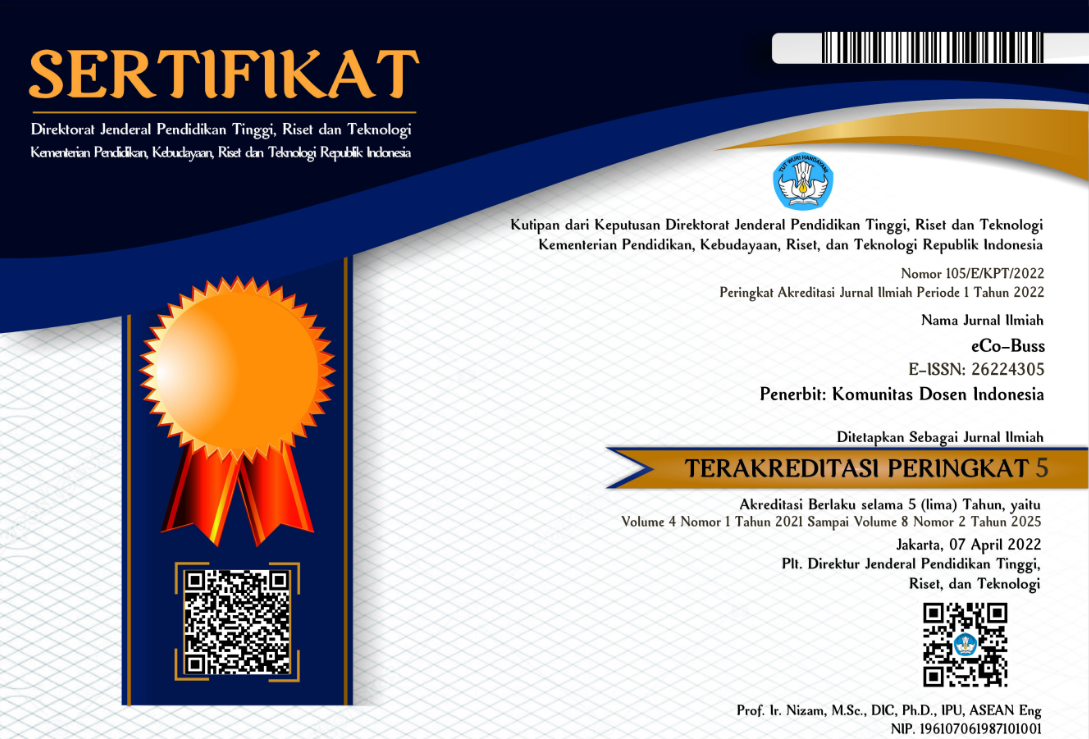Analisis Rasio Keuangan Untuk Menilai Kinerja Keuangan Perusahaan
DOI:
https://doi.org/10.32877/eb.v6i1.840
Keywords:
Financial Statements, Financial Ratios, Financial Performance
Abstract
This research aims to know the financial ratio analysis to assess the financial performance of the PT Argha Karya Prima Industry Tbk period 2017-2021 listed on the Indonesia Stock Exchange. (BEI). This research uses the type of descriptive analysis data with the calculation of data using quantitative methods. The data used is secondary data from the financial statements obtained from the company’s official website and the official website of Bursa Efek Indonesia. Data analysis techniques use financial ratio analysis: liquidity ratio, solvency ratio and profitability ratio. The results of the study that the liquidity ratio on PT Argha Karya Prima Industry Tbk if reviewed from current ratio, quick ratio and cash ratio is said to be not good because it is below industry standards. The revised solvency ratio of the company’s debt to assets ratio and debt-to-equity ratio is not in good condition because it is below industry standards. Revised activity ratio of receivable turnover, fixed asset turnover and total assets turnover of the company in an inefficient condition because it is below industry standards. In addition, inventory turnover results are in an efficient state because they are below industry standards. And the reviewed profitability ratio of return on assets, return on equity, return upon investment and net profit margin of the company is in good condition because it is above industry standards
Downloads
Downloads
Published
How to Cite
Issue
Section
License
Copyright (c) 2023 Aldilah Putri Mu’awadah, Yudiana Yudiana

This work is licensed under a Creative Commons Attribution-ShareAlike 4.0 International License.






 DOI :
DOI :
 Abstract views: 295
/
Abstract views: 295
/  PDF downloads: 547
PDF downloads: 547

